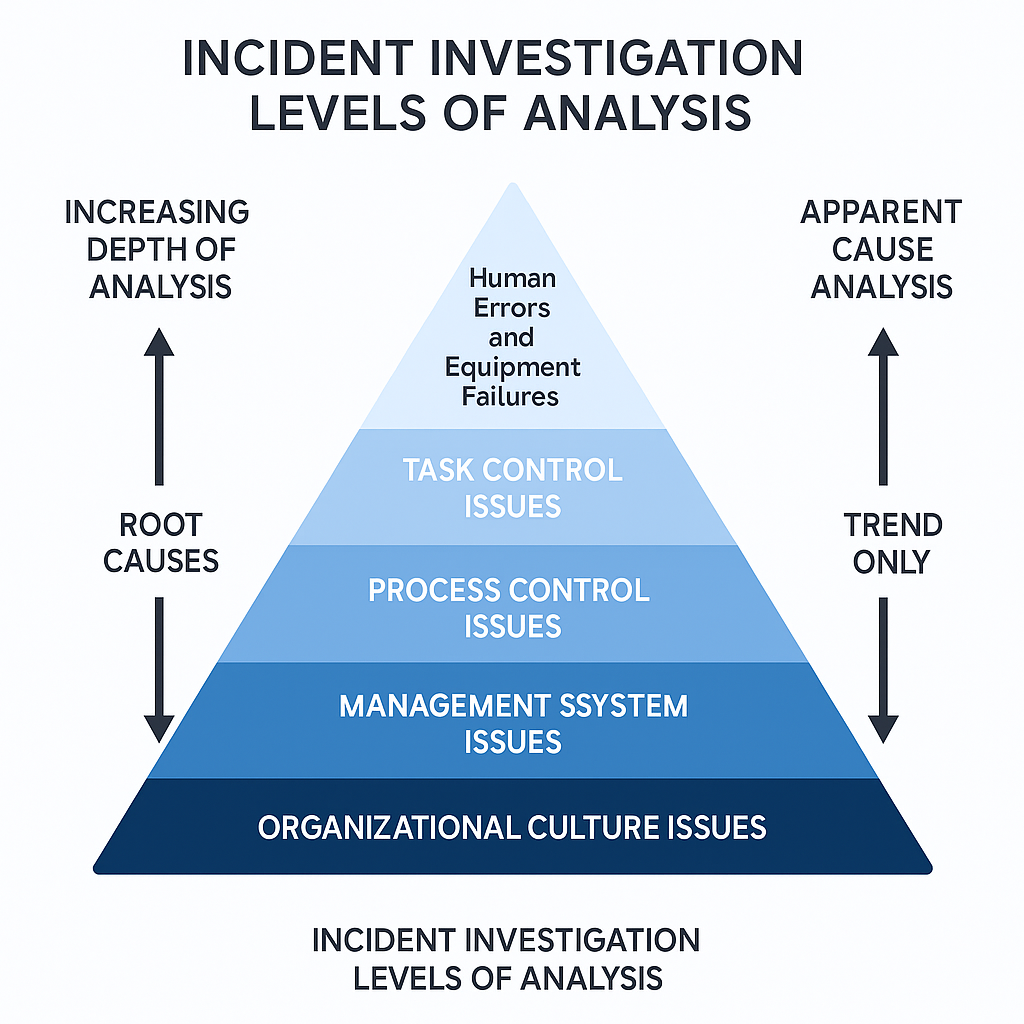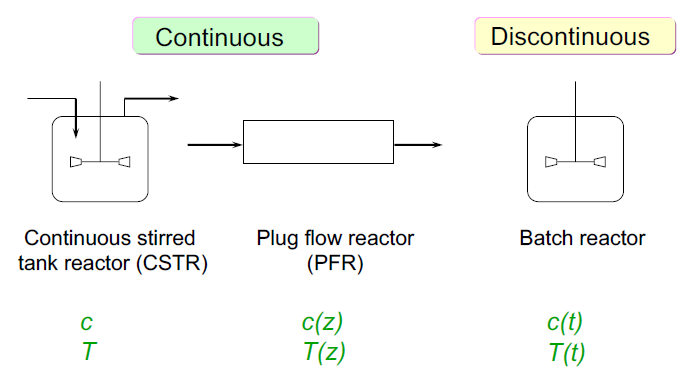No matter how robust a safety system, incidents (accidents, near-misses, or safety deviations) can still occur. When they do, a systematic incident investigation is critical. The purpose isn’t to assign blame, but to understand what happened, how it happened, and why it happened, so that effective corrective actions can be taken. A superficial investigation might stop at identifying an obvious immediate cause (e.g., “Operator forgot to lock out the machine”), but a proper investigation will dig deeper to find underlying root causes (e.g., “Training on lockout was insufficient and maintenance schedules were too tight, pressuring the operator to take shortcuts”). By identifying root causes – often organizational or systemic issues – companies can fix those underlying problems and prevent similar events in the future. This not only reduces the risk of repeat accidents (protecting workers and property), but also helps avoid costs from business interruption, emergency response, regulatory fines, and litigation that can stem from preventable incidents. Additionally, a culture of thorough investigations and learning from mistakes improves workforce morale and trust, since workers see that the focus is on improving the system rather than blaming individuals. Many safety frameworks (like ISO 45001 or OSHA’s PSM) require incident investigations, and authorities expect companies to investigate even “near-misses” because they are free lessons about where safeguards might be failing.
OSVARD offers incident and accident investigation services that deploy a suite of proven analytical techniques. When an incident occurs, we respond quickly to preserve evidence and information: physically (photographing the scene, securing failed components for analysis), digitally (equipment logs, CCTV footage), and through interviews. Our investigators approach interviews in a non-accusatory way, to get factual sequences and insights from witnesses or involved personnel. We then utilize root cause analysis (RCA) tools to piece together the incident timeline and causal factors. Common tools include: 5 Whys (repeatedly asking “why” something happened to drill down to a root cause), Fishbone (Ishikawa) diagrams to categorize potential causes (e.g., Man, Machine, Method, Material, Environment), and Fault Tree Analysis for complex incidents to map out combinations of failures leading to the event. As OSHA notes, multiple tools often work together: timelines, sequence diagrams, and logic trees are used to support each other in identifying root causes. For more complex process incidents, we might apply the CCPS “Guidelines for Investigating Chemical Process Incidents” methodology, which often includes forming an investigation team, using event and causal factor charting, and perhaps software like TapRooT or Apollo for RCA.
OSVARD’s final investigation report typically includes a clear narrative of what happened, backed by evidence (e.g., “At 10:35, Operator A opened Valve X without draining line Y, causing overflow…” etc.), analysis of immediate causes (the direct factors like equipment failure or human error), and most importantly the root causes – underlying reasons such as inadequate training, missing engineering safeguards, management system lapses, or design deficiencies. We focus on root causes because addressing those provides lasting improvement. For instance, an immediate cause might be “worn insulation led to an electrical short,” but root cause might be “the preventive maintenance program did not include thermal imaging to detect insulation degradation.” Our recommendations will thus target the system: e.g., implement thermal imaging inspections, update maintenance procedures, retrain electricians on hazard recognition, etc. We also emphasize not just fixing the specific issue but any similar exposures elsewhere in the facility (learn one, fix many). The report and recommendations are usually structured so they can be used in communication to stakeholders and regulators, demonstrating that the company has taken the incident seriously and is acting to prevent recurrence.
By bringing in OSVARD as independent experts, companies get an objective view that may be hard to achieve with internal personnel (who might have biases or feel pressure to not expose certain failings). We ensure investigations focus on facts and systemic improvements rather than individual blame – aligning with the modern view that “people do not fail, processes do” when it comes to root causes. This approach actually increases the likelihood that employees will cooperate and honestly share information, since they know the goal is to fix problems and not punish. Employers also see benefits in cost avoidance: as OSHA points out, root cause analysis can save enormous costs by preventing repeat incidents and their associated losses.
OSVARD’s detailed report and guidance equip management to implement changes effectively. We can facilitate a debrief workshop to communicate findings to the workforce (emphasizing lessons learned) and to management (focusing on policy or system changes needed). If the incident needs to be reported to authorities or insurance, our professional investigation report helps fulfill those obligations and can strengthen the company’s position by showing due diligence and commitment to improvement. Over time, engaging in thorough investigations improves the company’s safety culture: employees see that every incident or near-miss leads to tangible action, reinforcing that safety is truly a priority and that the organization is learning-oriented. Many of our clients incorporate OSVARD’s investigation findings into their training programs, turning real incidents into case studies for new employees or refreshers – a powerful way to prevent history from repeating.
In sum, OSVARD’s incident and accident investigation service not only explains what went wrong, but charts a clear path to making it right and reducing future risks. By solving the deeper issues uncovered – whether they are design flaws, organizational issues, or unforeseen scenarios – our clients are able to emerge from incidents safer and stronger than before.

OSHA – A thorough investigation that identifies root causes helps prevent similar events from happening again, reducing the risk of future injuries and damageosha.gov.
OSHA – Using root cause analysis can avoid unnecessary costs from business interruption, emergency response, regulatory fines, and litigation by preventing recurrence of incidentsosha.gov.
OSHA – Incident investigations should focus on root causes, not blame, which improves workplace morale and engagement in safetyosha.govosha.gov.
OSHA – Tools for root cause analysis include brainstorming, checklists, event trees, timelines, and causal factor determination; ideally multiple tools are used in combinationosha.govosha.gov.












